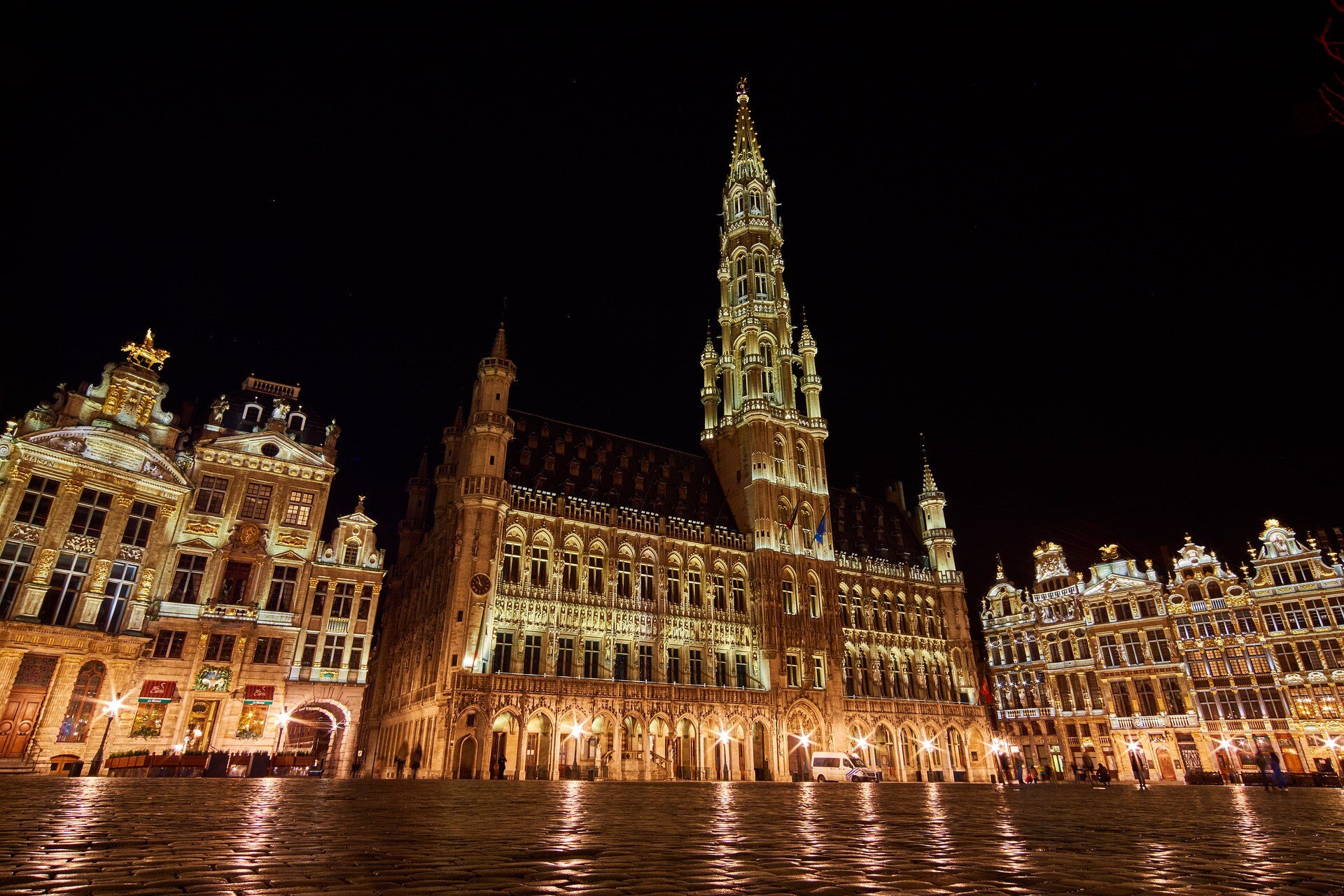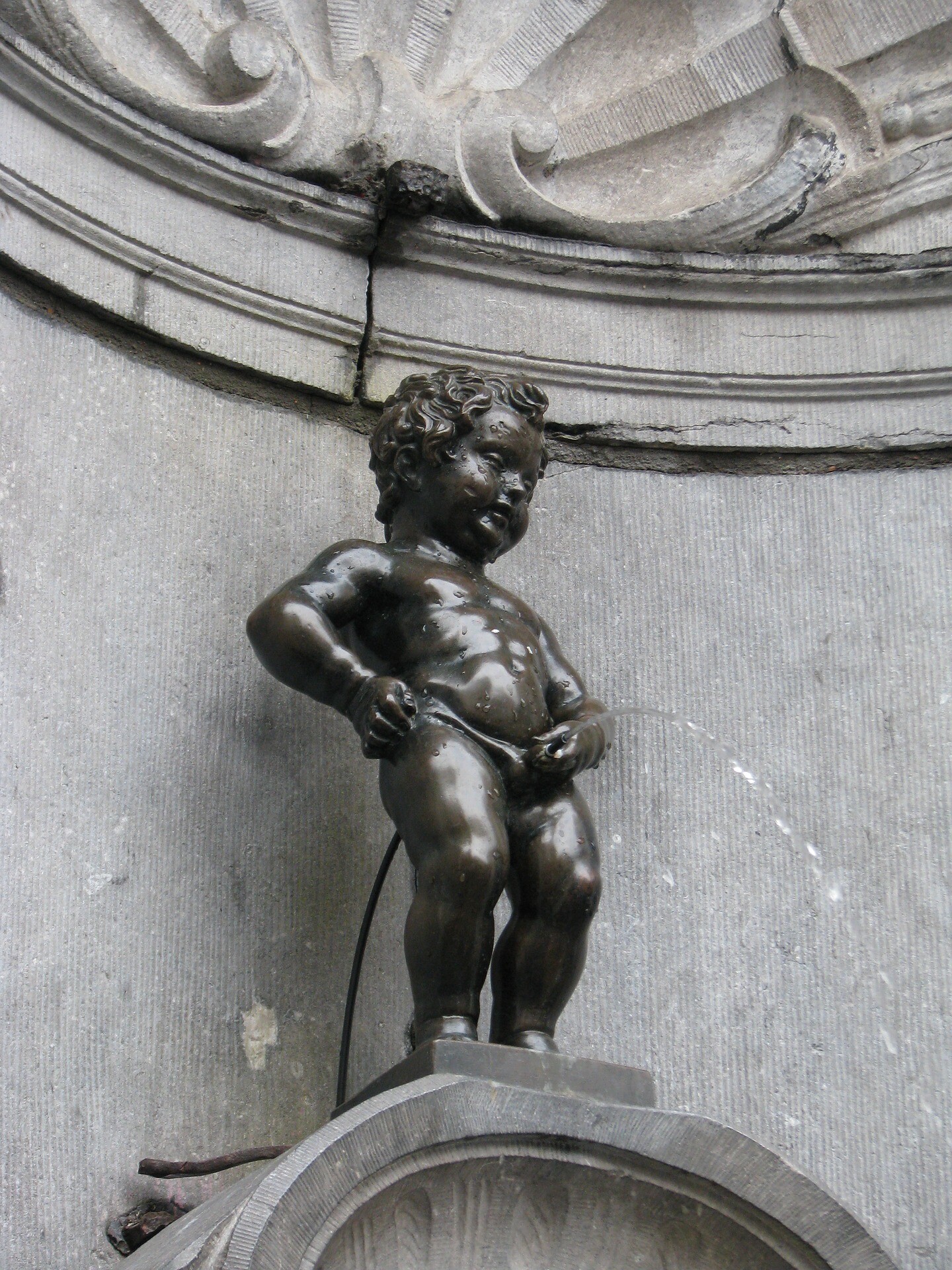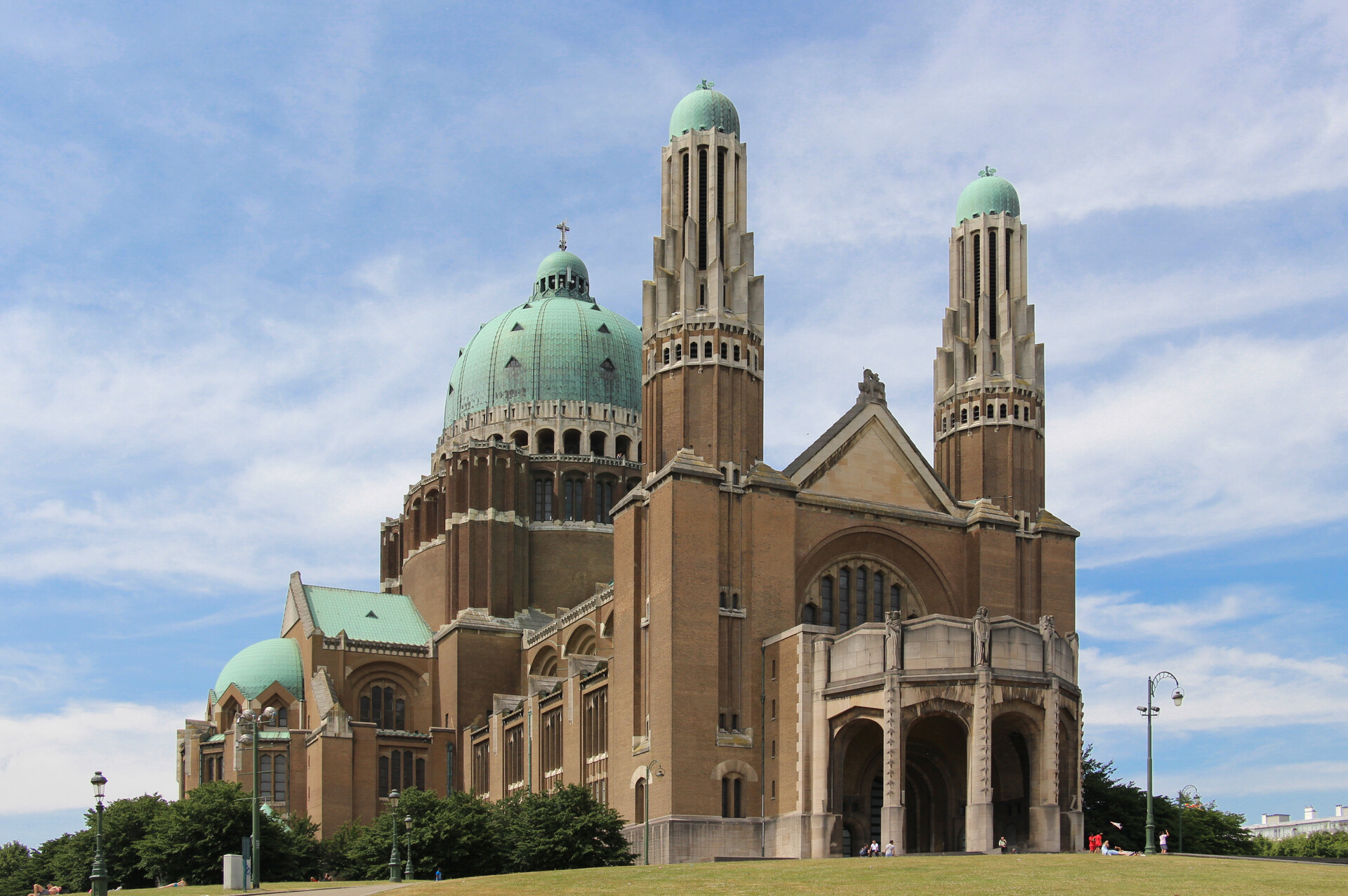What to do in Brussels – The best things to do in Brussels
- Tips for studying abroad in Brussels – Study abroad in Brussels
- How to get to Brussels – Getting to Brussels by plane, train, bus or car
- Public transport in Brussels – Getting around Brussels and Belgium
- Cost of living in Brussels
- Accommodation for students in Brussels - top tips and advice
- Save money in Brussels – tips for living on a student budget in Brussels
- Brussels neighborhoods – The most important districts of Brussels
- Nightlife in Brussels – A guide to nightclubs and going out in Brussels (Part 1)
- Nightlife in Brussels – A guide to nightclubs and going out in Brussels (Part 2)
- Where to eat in Brussels – Gastronomy in Brussels
- What to do in Brussels – The best things to do in Brussels
- Festivals in Brussels – Festivals and events in Brussels
- Day trips in Brussels – Places to visit and excursions around Brussels
- Brussels in 3 days – What to see in Brussels in 3 days
Brussels is a city filled with historical and impressive monuments worthy of UNESCO’s recognition. The beautiful city has seen great architects like Victor Horta shape some corners of the city with Art Nouveau magnificent designs. Therefore, Brussels is a undeniable cultural destination.
Top 10 Attractions of Brussels
Grand-Place

The Grand-Place is the main square of Brussels. It is renowned worldwide for it ornamental richness and gold, you can also find the Town Hall on this square. It is often considered as one of the most beautiful main squares in the world. It has been added to the list of UNESCO’s World Heritage in 1998. This square has gone through many changes, fries and destructions across the centuries.
However, the sole architectural witness of the medieval Grand-Place is certainly the Town Hall that was built between 1402 and 1455. It is notable to draw attention on the asymmetry of the building. Indeed, the tower isn’t exactly at the center of the edifice and both left and right sides of the building aren’t exactly identical. This is an oddity that is well known among Brussels people because a former legend claims that the architect that has designed the monument has committed suicide after realizing his architectural mistake by jumping from atop of the belfry.
Finally, every other summer, on the weekend of August 15th, it is noteworthy to say that a Flower Carpet covers the whole square and offers the chance to inhale the fragrant scent of the begonias and admire its details. Every other year, a hundred volunteers get busy on the Grand-Place by placing tens of boxes filled with multicolored flowers. They take a big handful and fill in the patterns drawn on the floor. A few hours later, an ephemeral 1,800-meter-square carpet will have appeared. This extraordinary spectacle is made complete by a visit to the balcony of the Town Hall.
Manneken-Pis

Manneken-Pis means in Dutch “the little man that pees”. It is a fountain in the shape of bronze statue of a height of 55.5 cm. It is located in the heart of Brussels, one minute away from the Grand-Place. In 1965, the statue was replaced by a replica of the original one designed in 1619-1620, which is safely kept in the Museum of the City of Brussels on the Grand-Place. The Manneken-Pis is the most famous symbol of Brussels, it also personifies the Belgian sense of humor and their independence of mind. This is a must-see. The Manneken-Pis is not always naked and he gets dressed on certain occasions; from clothes offered by the King Louis XV in 1747 to an Amnesty International prison costume in 2017, the little man owns up to 983 costumes. They are all exposed in the Garde-Robe du Manneken-Pis which is a museum sitting right across the fountain.
On the “Impasse de la Fidélité”, you can also take a look at the Jeanneke-Pis which is said to be the female Manneken-Pis. It is a fountain representing a little naked girl crouching and peeing. The man who designed this small statue is said to have wanted to re-establish gender equality.
And a little amusing secret of Brussels resides in the Zinneke-Pis (Zinneke means bastard…) which is the bronze statue of a dog mimicking peeing on a bollard on the “Rue des Chartreux” in the city center.
Atomium

The Atomium is one of the most emblematic modern monuments of Brussels. It was built in 1958 at the Brussels World’s Fair or Expo 58 just like the Eiffel Tower was constructed at the 1889 World’s Fair. It is situated in Laeken, near the Heysel metro station. The monument forms the shape of a unit cell of an iron crystal magnified 165 billion times. It was imagines by the engineer André Waterkeyn and erected by the architects André and Jean Polak. The building goes midway between sculpture and architecture; it culminates at a height of 102 meters. Just like the Manneken-Pis and the Grand-Place, the Atomium has become a symbol of the Belgian capital. The monument symbolically incarnates the audacity of an age that was willing to confront the fate of Humanity with scientific discoveries.
Tubes of 3 meters’ diameter connect the nine spheres that have an 18-meter diameter. Among the nine spheres, only six are accessible to the public. Each one comprises two main floors and an underground floor reserved for the personnel. In the central tube, there is rapid elevator that can rise up to 22 people to the top in 23 seconds. In the oblique tubes, you can find among the longest escalators in Europe with the longest one being 35 meters long.
The Atomium wasn’t aimed at lasting more than the duration of the Expo 58 but due to its popularity and success, it has become a major element of the Brussels landscape, which postponed its destruction until this prospect was given up on. It was considered in 2013 by CNN as the most “bizarre” European monument.
Not only can you take photographs of the monument, but you can also visit it from inside all week, 365 days a year for 8 € per student.
Musée Magritte

The Magritte Museum is part of the Royal Museums of Fine Arts of Belgium. It is located a 1731 neoclassical building of the Place Royale of Brussels, near the Gare Centrale metro station. The Place Royale and the buildings surrounding it are a historical witness of the pre-1789 French Belgium. This is where the Prince Leopold I was made the first king of Belgium on July 21st, 1831.
René Magritte was a Belgian surrealist painter renowned worldwide for challenging observers’ preconditioned perceptions of reality. He was a major influence for future art styles. The important collection of paintings of Magritte and its international reputation deserved a special space. The project of museum was carried out in 2009. It is since opened to the public.
The museum displays the richest collection dedicated to Magritte in the world. It possesses more than 150 paintings, drawings, sculptures and painted objects, as well as advertisements, musical partitions, vintage photos and films directed by the artist. There are three floors in the museum and it offers a chronological and thematic visit of the Magritte’s work.
Every first Wednesday of the month, entry to the museum comes free of charge. Otherwise, fee entry is only 2 € for people under 26 years old.
Palais royal de Bruxelles

The Royal Palace of Brussels is the administrative residence and the main office of King Philippe. He daily works there with his collaborators. In this office, the king receives the institutional representatives and foreigner invitees like State rulers and ambassadors. In the palace, there are the offices of the king and the queen but you can also find the king’s Cabinet, the General Secretariat, the Civil List, the Military Household, the Protocol and the queen’s Secretariat. Other members of the royal family also have their offices in the palace. There are also prestigious receptions rooms in the palace.
Since 1965, it is traditionally allowed for the public to access the palace as to discover its mysteries. It takes place every summer after the National Day on July 21st until September.
Serres royales de Laeken

The Royal Greenhouses of Laeken are an architectural edifice built in 1873. It is one of the main 19th-century monuments in Belgium. The greenhouses are entirely made of metal and glass. Just like the Crystal Palace in London, it was considered as one of the most spectacular innovation of the time. It was conceived for King Leopold II because he was passionate about plants and flowers. The vast complex is heated and comprises tropical, subtropical and cold areas.
It is a unique complex in Europe because of its architecture and the size of the greenhouses as well as because of the botanic collection that it hosts, a huge amount of those plants are extremely rare and of inestimable value.
The place is only open to the public for 3 weeks a year always in springtime, right when plants bloom. It is then a unique opportunity to discover one of the most remarkable constructions of Belgian heritage.
Basilique nationale du Sacré-Coeur

The Basilica of the Sacred Heart in Brussels is usually called the Basilica of Koekelberg by the locals. It is devoted to the Sacred Heart of Jesus. It is undeniably one of the most important religious edifices of Brussels. It is the fifth biggest church in the world and the biggest building constructed in the Art Nouveau style in Western Europe. It is placed in a way that it can be observed from far away.
It is possible for the public to access the panorama on the terrace under the basilica’s dome. When the weather’s good, you can see beyond the borders of Brussels. There is also a museum of Religious Modern Art inside the church.
Mont des Arts

The Mont des Arts means the mount of the arts and is a historical complex comprising the Royal Library of Belgium and the General Archives of the Kingdom. It is the entrance door to the old city of Brussels, it is located near the Gare Centrale metro station. What’s really interesting about the Mont des Arts is it is a truly amazing belvedere. When the weather’s clear, it offers of the best panoramic viewpoints of Brussels, you can see the Grand-Place, the cathedral and even the Atomium. Also take a look at the Carillon of the Mont des Arts which are 24 bells surrounding a beautiful golden clock.
Between the trees and stairs, you will see tourists and students sitting, talking and relaxing. The Mont des Arts makes for an ideal starting point to commence your visit in the city of Brussels.
Maison d’Érasme

The Erasmus House is located near the Saint-Guidon metro station in the commune of Anderlecht. It is a museum dedicated to the Dutch Renaissance humanist Erasmus of Rotterdam. Erasmus lived there in 1521 to work on the translation of the New Testament from Greek to Latin. The site also comprises two magnificent gardens that intend to adhere to Erasmus’s spirit. On one side, you have the medicinal garden and on the other one, you have the philosophical garden. It is such a cute place to visit, you shouldn’t miss it.
Musée des Instruments de Musique (MIM)
This is an incredible museum inside the walls of an incredible building designed in the Art Nouveau style. The building comprises about 3000 meters square of an exhibited impressive collection of instruments, their history and their functioning. Go to the cafeteria at the 6th floor and you will enjoy a uniquely beautiful view of Brussels.
Every first Wednesday of the month, entry comes free of charge. Between 18 and 26 years old, entry fee is 10 €.
Parcours BD

The city of Brussels grants particular attention to the rich and dynamic Belgian tradition of comic strips. It has been many decades that the city pays homage to French-Belgian comic strip characters and authors on its walls. The Comic Strip Tour is now an integral part of the urbanistic landscape of Brussels. There are nearly sixty murals spread across the city center and Laeken. From Tintin, to Billy & Buddy, to Spirou, to Marsupilami, to Asterix, to Lucky Luke, to Peyo who is the author of the Smurfs. Find out the walls of the comic strip walk in detail.
Parks in Brussels

Brussels is a very green city and you can find parks all throughout its numerous neighborhoods. If you had to go visit the most emblematic parks of Brussels, then you should definitely go to the Parc du Cinquantenaire with its impressive Triumphal Arch that celebrated, the fiftieth anniversary of the Independence of Belgium in 1880. It is located in the eastern part of the European district at the Merode metro station, which is 50 minutes by foot from the city center and only 10 minutes by metro. The other emblematic park of Brussels is definitely the Brussels Park (called by locals Royal Park) which was designed in a neoclassicist style. It is very close to the Central Station in the city center of Brussels.
Cinemas in Brussels
There are lots of cinemas in Brussels, some are more independent with an indie program, such as the Vendôme (in Porte de Namur metro station in the Matongé district), while some are bigger like the UGC (in the city center) and the Kinépolis (outside of the center, in front of the Atomium). Most of the movies (except for the children’s movies) in Brussels are only available in Original Language because of the bilingual character of the city. I would highly suggest you to visit the Eldorado room of the Debrouckère UGC Cinema and take a picture there because it is a really beautiful and historical room of Brussels.

Theaters in Brussels
If you’re into theatre, Brussels hosts greats shows all year long. You should definitely visit the “Théâtre royal du Parc” for its impressive decor, it is located 1 minute by foot from the Parc metro station. For opera lovers, go to the “Opéra de la Monnaie” right in the city center at the Debrouckère metro station, it is an impressive building and inside, it’s even more magnificent. Finally, the “Théâtre National”, in the city center too, usually has a modern program that will definitely catch your attention.
- Return to Where to eat in Brussels – Gastronomy in Brussels
- Continue to Festivals in Brussels – Festivals and events in Brussels
Photo gallery
Content available in other languages
Want to have your own Erasmus blog?
If you are experiencing living abroad, you're an avid traveller or want to promote the city where you live... create your own blog and share your adventures!
I want to create my Erasmus blog! →



























Comments (0 comments)